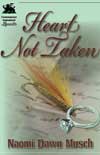Every rider, roper, athlete, or stunt double will tell you: before you can do the special tricks, you have to master the basics, or you’re likely to get hurt.
So here’s a VERY basic writing question:
What’s a sentence?
Answer you learned in 3rd grade:
A sentence has a noun (specifically a subject) and a verb.
It begins with a capital letter and ends with a punctuation mark.
Very good!
That basic fact actually has some useful and even profound implications for grown-up writers.
For example, you may know that the shortest sentence in the Bible is found in John 11:35–
Jesus wept.
It’s so short, so stark and to-the-point, that it commands our attention and makes us stop to consider its implications.
Good writers can use that knowledge too, especially if you use it sparingly. Short, terse sentences impact readers with a sense of urgency or undeniable fact. They speed up the pace of your writing while causing readers to somehow slow down and think about the concepts. Because they’re short, they stick.
BUT…
One VERY common punctuation issue that crops up in any class of writing students is the sentence fragment–a collection of words that do not have the noun and verb required to qualify as a true sentence.
Before I give you examples of the rule, let me give you examples of a few exceptions that ARE legitimate. Consider these fragments:
Stop! Now.
- Commands like “Stop!” often contain only the verb. We understand the implied subject, an invisible “You,” precisely because it is an urgent command. A command with an implied but invisible subject is okay.
- Bullet statements such as “Now,” (or “Yes,” or “Not on your life”) appear frequently in dialogue and sometimes when you are writing an artistic scene. They can be very powerful IF you use them sparingly.
But here’s what’s NOT okay:
The box on the top shelf all the way to the right against the wall with the window.
Just because it’s long doesn’t make this a complete sentence. It has several nouns (box, shelf, right, wall, window), but none of them are acting as the subject of the sentence. Most are the objects of prepositional phrases. There is also no verb.
So how could we fix something like this?
We could simply add a verb: The box IS on the top shelf all the way to the right against the wall with the window.
Or we could add a subject and verb: YOUR PHOTOS ARE IN the box on the top shelf all the way to the right against the wall with the window.
This excellent post gives more examples of fragmented and run-on sentences (which we’ll cover together later).
Exercise:
- Select one page you’ve written recently.
- Highlight the noun (subject) and verb in each sentence.
- If some seem to be missing, study those sentences carefully. Some may be legitimate fragments, but others may need a quick fix.
















Speak Your Mind
You must be logged in to post a comment.